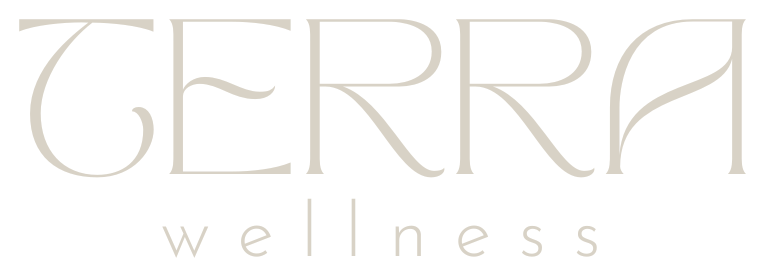Vibration Machines for Weight Loss: Science vs. Marketing Hype
Do vibration machines help with weight loss in Australia—or is it just hype?
Answer: Vibration machines for weight loss can aid fat loss when paired with a calorie deficit and active exercises on the platform. In Australia, expect modest results (better muscle retention, small fat loss), not miracle drops—prioritise nutrition, consistency, and progressive sessions.
The Science of Weight Loss
Before examining vibration machines specifically, it's crucial to understand the fundamental science of weight loss. This foundation helps evaluate any weight loss method, including vibration training, with realistic expectations.
The Caloric Deficit Principle
Weight loss occurs when you create a caloric deficit - burning more calories than you consume. This principle is supported by decades of research and remains the cornerstone of all successful weight loss approaches
Key Weight Loss Facts
- 1 pound of fat = 3,500 calories - This is the energy deficit needed to lose one pound
- Safe weight loss rate = 1-2 pounds per week - Faster loss often includes muscle and water
- Diet accounts for 70-80% of weight loss - Exercise alone is rarely sufficient
- Muscle preservation is crucial - Maintaining muscle mass keeps metabolism high
Components of Daily Energy Expenditure
Understanding where your body burns calories helps put vibration training in perspective:
| Component | Percentage of Total | Description | Can Vibration Training Affect? |
|---|---|---|---|
| Basal Metabolic Rate (BMR) | 60-70% | Energy for basic body functions | Minimally (through muscle maintenance) |
| Thermic Effect of Food (TEF) | 8-10% | Energy to digest and process food | No direct effect |
| Exercise Activity (EAT) | 15-20% | Planned exercise and sports | Yes (during vibration sessions) |
| Non-Exercise Activity (NEAT) | 15-20% | Daily activities, fidgeting, posture | Possibly (improved muscle tone) |
This breakdown shows that vibration training primarily affects the "Exercise Activity" component, which represents only 15-20% of total daily energy expenditure. This limitation explains why exercise alone, including vibration training, has modest effects on weight loss without dietary changes.
Vibration Machine Weight Loss Research
The scientific literature on vibration training and weight loss includes several studies, but the results are more modest than marketing claims suggest. Let's examine the evidence objectively.
Major Research Studies
Study 1: Vissers et al. (2010) - Fitness Center Study
This randomized controlled trial followed 79 overweight adults for 6 months, comparing whole-body vibration training to conventional fitness training and a control group [2].
Results:
- Vibration group: Lost 2.5 kg (5.5 lbs) over 6 months
- Conventional exercise group: Lost 1.1 kg (2.4 lbs) over 6 months
- Control group: Gained 0.9 kg (2.0 lbs) over 6 months
- Important note: All groups received dietary counseling
Study 2: Milanese et al. (2013) - Sedentary Women Study
This study examined 48 sedentary women over 8 weeks, comparing vibration training to traditional aerobic exercise [3].
Results:
- Vibration group: Lost 1.8 kg (4.0 lbs) over 8 weeks
- Aerobic exercise group: Lost 2.1 kg (4.6 lbs) over 8 weeks
- Body fat percentage: Both groups showed similar reductions
- Muscle mass: Vibration group better preserved muscle
Study 3: Fjeldstad et al. (2009) - Older Adults Study
This research focused on older adults (average age 67) over 6 months of vibration training [4].
Results:
- Weight loss: Average 1.2 kg (2.6 lbs) over 6 months
- Body composition: Improved muscle-to-fat ratio
- Metabolic benefits: Improved insulin sensitivity
- Adherence: High compliance rate (85%)
Meta-Analysis Results
A comprehensive meta-analysis of vibration training studies found that across all research, participants typically lost 1-3 pounds over 8-12 weeks when vibration training was combined with dietary interventions [5].
Research Summary: What the Science Actually Shows
- Average weight loss: 1-3 pounds over 2-3 months
- Best results: When combined with diet and lifestyle changes
- Muscle preservation: Better than diet alone or some cardio
- Metabolic benefits: Modest improvements in insulin sensitivity
- Adherence: Generally good due to convenience and low impact
Calorie Burn Reality Check
Understanding the actual caloric expenditure during vibration training is crucial for setting realistic weight loss expectations.
Measured Caloric Expenditure
Research using indirect calorimetry (the gold standard for measuring calorie burn) has measured the actual energy expenditure during vibration training:
Calories Burned During Vibration Training
Passive Standing (just standing on platform):
- 150 lb person: 20-30 calories per 15 minutes
- 180 lb person: 25-35 calories per 15 minutes
- 200 lb person: 30-40 calories per 15 minutes
Active Exercises (squats, lunges on platform):
- 150 lb person: 60-90 calories per 15 minutes
- 180 lb person: 75-110 calories per 15 minutes
- 200 lb person: 85-125 calories per 15 minutes
For Comparison - Other Activities (15 minutes):
- Brisk walking: 80-120 calories
- Cycling (moderate): 100-150 calories
- Swimming: 120-180 calories
- Running (6 mph): 150-220 calories
Weight Loss Timeline Reality
Using the caloric expenditure data, here's what realistic weight loss looks like with vibration training:
Realistic Weight Loss Timeline
Scenario: 180 lb person, active vibration training, 15 minutes, 4x per week
Weekly calorie burn: 300-440 calories from vibration training
Monthly calorie burn: 1,200-1,760 calories from vibration training
Theoretical monthly weight loss: 0.3-0.5 pounds from exercise alone
To lose 1 pound per week through vibration training alone:
- Would need to burn 3,500 calories weekly
- Would require 8-12 hours of active vibration training per week
- Conclusion: Not practical or realistic
Marketing Claims vs. Scientific Reality
The vibration machine industry has made numerous weight loss claims that don't align with scientific evidence. Let's examine common marketing claims against research findings.
CLAIM: "Lose 10 pounds in 10 days"
REALITY: No scientific study has shown this level of fat loss from vibration training. Such rapid weight loss would primarily be water weight, which returns quickly.
Science says: Healthy fat loss is 1-2 pounds per week maximum.
CLAIM: "Burns 300% more calories than regular exercise"
REALITY: Vibration training typically burns fewer calories than most traditional exercises. The 300% claim has no scientific basis.
Science says: Vibration training burns 20-40% of what running burns.
CLAIM: "Melts fat without diet or exercise"
REALITY: No exercise, including vibration training, can overcome a poor diet. Weight loss requires caloric deficit.
Science says: Diet accounts for 70-80% of weight loss success.
CLAIM: "Targets belly fat specifically"
REALITY: Spot reduction of fat is not possible. Fat loss occurs throughout the body based on genetics and hormones.
Science says: You cannot target specific areas for fat loss.
CLAIM: "Equivalent to 1 hour of gym workout in 10 minutes"
REALITY: Caloric expenditure measurements show this is false. 10 minutes of vibration training burns far fewer calories than 1 hour of gym exercise.
Science says: Time and intensity matter for calorie burn.
CLAIM: "Boosts metabolism for 24 hours"
REALITY: While exercise can increase metabolism temporarily, vibration training's effect is minimal and short-lived.
Science says: Metabolic boost lasts 1-2 hours and is proportional to exercise intensity.
How Vibration Training Can Help Weight Loss
While vibration training isn't a magic weight loss solution, it can contribute to weight loss efforts in several legitimate ways when used as part of a comprehensive approach.
Legitimate Weight Loss Benefits
1. Muscle Preservation During Weight Loss
One of vibration training's most valuable contributions to weight loss is helping preserve muscle mass during caloric restriction. Research shows that people who include resistance-type exercise (including vibration training) during weight loss maintain more muscle than those who diet alone [6].
Why this matters:
- Muscle tissue burns more calories at rest than fat tissue
- Preserving muscle keeps metabolism higher
- Better body composition (more muscle, less fat)
- Improved strength and function
2. Improved Insulin Sensitivity
Several studies have shown that vibration training can improve insulin sensitivity, which helps with weight management and fat loss [7].
Benefits include:
- Better blood sugar control
- Reduced fat storage
- Improved energy levels
- Reduced cravings for sugary foods
3. Increased Daily Activity
For sedentary individuals, vibration training can serve as a gateway to increased physical activity. The convenience and low impact nature make it accessible for people who might otherwise avoid exercise.
4. Improved Circulation and Recovery
Better circulation can support recovery from other exercises and may help with the mobilization of fatty acids for energy use.
5. Stress Reduction
Some users report stress reduction from vibration training, which can indirectly support weight loss by reducing stress-related eating and cortisol production.
Mechanisms of Action
Vibration training may support weight loss through several physiological mechanisms:
- Muscle Activation: Involuntary muscle contractions increase energy expenditure
- Hormonal Effects: May influence hormones related to metabolism and appetite
- Improved Body Composition: Better muscle-to-fat ratio improves metabolic rate
- Enhanced Recovery: Better recovery allows for more frequent exercise
- Motivation: Convenience may improve exercise adherence
Setting Realistic Expectations
Success with vibration training for weight loss requires setting appropriate expectations based on scientific evidence rather than marketing claims.
What You Can Realistically Expect
Realistic Weight Loss Expectations with Vibration Training
Short-term (4-8 weeks):
- 1-3 pounds of weight loss when combined with diet
- Improved muscle tone and strength
- Better balance and coordination
- Increased energy levels
Medium-term (3-6 months):
- 3-8 pounds of weight loss with comprehensive program
- Noticeable improvements in body composition
- Better insulin sensitivity
- Established exercise habit
Long-term (6+ months):
- Sustained weight loss when part of lifestyle change
- Improved overall fitness and health markers
- Better weight maintenance
- Reduced risk of weight regain
Factors That Influence Results
Several factors determine how much weight loss you can expect from vibration training:
| Factor | High Impact | Medium Impact | Low Impact |
|---|---|---|---|
| Starting weight | Significantly overweight | Moderately overweight | Normal weight |
| Diet quality | Caloric deficit + good nutrition | Moderate caloric deficit | No dietary changes |
| Exercise frequency | 5-7 times per week | 3-4 times per week | 1-2 times per week |
| Session intensity | Active exercises on platform | Mixed active/passive | Passive standing only |
| Additional exercise | Regular cardio + strength | Some additional activity | Vibration training only |
| Consistency | Never miss sessions | Occasional missed sessions | Irregular use |
Maximizing Weight Loss Results
To get the most weight loss benefit from vibration training, it should be part of a comprehensive approach that addresses all aspects of weight management.
The Complete Weight Loss Strategy
1. Nutrition (70% of results)
- Create a moderate caloric deficit: 300-500 calories below maintenance
- Focus on whole foods: Lean proteins, vegetables, fruits, whole grains
- Adequate protein: 0.8-1.2g per pound of body weight to preserve muscle
- Stay hydrated: Half your body weight in ounces of water daily
- Meal timing: Eat regularly to maintain energy for exercise
2. Vibration Training (15% of results)
- Frequency: 4-6 sessions per week
- Duration: 15-30 minutes per session
- Intensity: Include active exercises, not just passive standing
- Progression: Gradually increase duration and exercise complexity
- Consistency: Regular sessions are more important than intensity
3. Additional Exercise (10% of results)
- Cardio: 2-3 sessions of moderate cardio per week
- Strength training: 2 sessions per week focusing on major muscle groups
- Daily activity: Increase steps, take stairs, park farther away
- Active recovery: Walking, stretching, yoga on rest days
4. Lifestyle Factors (5% of results)
- Sleep: 7-9 hours per night for optimal metabolism
- Stress management: Meditation, relaxation techniques
- Consistency: Sustainable habits rather than extreme measures
- Patience: Focus on long-term lifestyle change
Effective Vibration Training Protocols for Weight Loss
Beginner Protocol (Weeks 1-4):
- Frequency: 20-25 Hz
- Duration: 10-15 minutes
- Exercises: Standing, gentle squats, calf raises
- Sessions: 3-4 per week
- Focus: Building tolerance and habit
Intermediate Protocol (Weeks 5-12):
- Frequency: 25-30 Hz
- Duration: 15-25 minutes
- Exercises: Squats, lunges, planks, push-ups
- Sessions: 4-5 per week
- Focus: Increasing intensity and variety
Advanced Protocol (Weeks 13+):
- Frequency: 30-35 Hz
- Duration: 20-30 minutes
- Exercises: Complex movements, single-leg exercises, dynamic movements
- Sessions: 5-6 per week
- Focus: Maximizing calorie burn and muscle engagement
Comparison to Other Exercises
Understanding how vibration training compares to other forms of exercise helps put its weight loss potential in perspective.
| Exercise Type | Calories/Hour (180 lb person) | Weight Loss Effectiveness | Muscle Preservation | Accessibility |
|---|---|---|---|---|
| Vibration Training (Active) | 200-300 | LOW | MEDIUM | HIGH |
| Walking (Brisk) | 300-400 | MEDIUM | LOW | HIGH |
| Cycling (Moderate) | 400-600 | MEDIUM | LOW | MEDIUM |
| Swimming | 500-700 | HIGH | MEDIUM | LOW |
| Running (6 mph) | 600-800 | HIGH | LOW | MEDIUM |
| Weight Training | 300-500 | MEDIUM | HIGH | MEDIUM |
| HIIT Training | 600-900 | HIGH | HIGH | LOW |
When Vibration Training Makes Sense
Vibration training can be particularly valuable for weight loss in specific situations:
- Limited mobility: Joint problems, injuries, or disabilities that limit other exercise
- Time constraints: Very busy schedules that make gym visits difficult
- Exercise aversion: People who dislike traditional exercise
- Starting point: Sedentary individuals beginning their fitness journey
- Supplement: Addition to existing exercise routine
- Recovery: Active recovery between more intense workouts
Proven Success Strategies
Based on research and real-world experience, certain strategies significantly improve weight loss success with vibration training.
Dietary Strategies That Work
Nutrition Strategies for Maximum Results
Pre-Workout Nutrition:
- Light snack 30-60 minutes before training
- Combine protein and carbs (apple with almond butter)
- Stay hydrated but don't overdrink before vibration
Post-Workout Nutrition:
- Protein within 30 minutes to support muscle recovery
- Hydrate to replace fluids lost during exercise
- Don't use exercise as excuse to overeat
Daily Nutrition:
- Track calories for first 2-4 weeks to establish baseline
- Focus on nutrient-dense, whole foods
- Plan meals and snacks to avoid impulsive eating
- Include adequate protein at each meal
Exercise Progression Strategies
Week 1-2: Foundation Building
- Focus on proper form and comfort
- Start with basic standing positions
- Use handrails for balance if needed
- Keep sessions short (10-15 minutes)
Week 3-6: Intensity Building
- Add simple exercises (squats, calf raises)
- Increase session duration gradually
- Experiment with different frequencies
- Add 1-2 additional weekly sessions
Week 7-12: Optimization
- Include complex movements and combinations
- Maximize active exercise time
- Consider adding resistance bands or weights
- Track progress and adjust intensity
Motivation and Adherence Strategies
- Set realistic goals: Focus on process goals (sessions per week) rather than just outcome goals (pounds lost)
- Track progress: Use measurements, photos, and how you feel, not just the scale
- Create routine: Exercise at the same time each day to build habit
- Find accountability: Share goals with friends or family
- Celebrate small wins: Acknowledge consistency and improvements
- Plan for obstacles: Have strategies for busy days or low motivation
Who Benefits Most from Vibration Training
While anyone can potentially benefit from vibration training, certain populations are more likely to see meaningful weight loss results.
Ideal Candidates for Vibration Training Weight Loss
1. Sedentary Individuals
- Currently doing little to no exercise
- Any increase in activity provides benefits
- Low barrier to entry
- Can serve as gateway to more activity
2. People with Joint Issues
- Arthritis or joint pain limiting other exercise
- Low-impact nature reduces joint stress
- Can maintain activity during flare-ups
- Helps preserve muscle mass
3. Older Adults
- Age-related muscle loss (sarcopenia)
- Balance and coordination concerns
- Convenience and safety factors
- Research shows good results in this population
4. Time-Constrained Individuals
- Very busy schedules
- Home-based exercise preference
- Efficient use of limited time
- Can fit into small time windows
Who Should Consider Other Options
Limited Benefit Groups:
- Already active individuals: May not provide sufficient stimulus
- Young, healthy adults: Can typically handle more intense exercise
- Significant weight loss goals: Need higher calorie burn activities
- Athletic populations: Require sport-specific training
Common Mistakes to Avoid
Understanding common mistakes helps maximize results and avoid disappointment with vibration training for weight loss.
Mistake #1: Expecting Dramatic Results
The Problem: Believing marketing claims about rapid weight loss
The Solution: Set realistic expectations based on scientific evidence
Better Approach: Focus on overall health improvements, not just weight loss
Mistake #2: Using Vibration Training Alone
The Problem: Relying solely on vibration training without dietary changes
The Solution: Combine with proper nutrition and other activities
Better Approach: Use as part of comprehensive lifestyle change
Mistake #3: Passive Use Only
The Problem: Just standing on the platform without active exercises
The Solution: Include squats, lunges, and other movements
Better Approach: Maximize muscle engagement and calorie burn
Mistake #4: Inconsistent Use
The Problem: Sporadic sessions without establishing routine
The Solution: Create consistent schedule and stick to it
Better Approach: Prioritize consistency over intensity
Mistake #5: Ignoring Other Health Factors
The Problem: Not addressing sleep, stress, or other lifestyle factors
The Solution: Take holistic approach to health and weight loss
Better Approach: Address all aspects of healthy lifestyle
Sample Weight Loss Programs
Here are three sample programs designed for different experience levels and goals:
Beginner Program (Weeks 1-8)
Goal: Establish habit and build foundation
Schedule: 3 days per week (Monday, Wednesday, Friday)
Week 1-2:
- Warm-up: 2 minutes standing (15 Hz)
- Main: 8 minutes alternating standing and gentle squats (20 Hz)
- Cool-down: 2 minutes standing (15 Hz)
- Total: 12 minutes
Week 3-4:
- Warm-up: 2 minutes standing (15 Hz)
- Main: 12 minutes mixed exercises (22 Hz)
- Cool-down: 2 minutes standing (15 Hz)
- Total: 16 minutes
Week 5-8:
- Warm-up: 3 minutes standing (15 Hz)
- Main: 15 minutes active exercises (25 Hz)
- Cool-down: 2 minutes standing (15 Hz)
- Total: 20 minutes
Intermediate Program (Weeks 9-20)
Goal: Maximize calorie burn and muscle engagement
Schedule: 4-5 days per week
Session Structure:
- Warm-up: 3 minutes (15-20 Hz)
- Circuit 1: 8 minutes active exercises (25-30 Hz)
- Rest: 2 minutes light movement
- Circuit 2: 8 minutes active exercises (25-30 Hz)
- Cool-down: 3 minutes (15 Hz)
- Total: 24 minutes
Exercise Rotation:
- Day 1: Lower body focus (squats, lunges, calf raises)
- Day 2: Upper body focus (push-ups, planks, arm exercises)
- Day 3: Full body circuit
- Day 4: Balance and stability focus
- Day 5: High-intensity mixed exercises
Advanced Program (Weeks 21+)
Goal: Maintain results and continue progression
Schedule: 5-6 days per week
Session Structure:
- Warm-up: 3 minutes dynamic movement (20 Hz)
- Main workout: 20-25 minutes varied intensity
- Cool-down: 3 minutes relaxation (15 Hz)
- Total: 26-31 minutes
Advanced Techniques:
- Interval training: Alternate high and low intensity
- Resistance integration: Add bands or light weights
- Complex movements: Multi-joint exercises
- Sport-specific movements: Functional patterns
Conclusion
Vibration machines can contribute to weight loss, but success requires realistic expectations and a comprehensive approach. The scientific evidence shows modest but meaningful benefits when vibration training is combined with proper nutrition and lifestyle changes.
The key to success lies in understanding that vibration training is a tool, not a magic solution. It works best for specific populations - particularly sedentary individuals, older adults, and those with mobility limitations. For these groups, vibration training can provide an accessible entry point into regular physical activity and help preserve muscle mass during weight loss.
Remember that sustainable weight loss is a marathon, not a sprint. Focus on building healthy habits, maintaining consistency, and making gradual improvements over time. When used as part of a balanced approach that includes proper nutrition, adequate sleep, stress management, and other forms of physical activity, vibration training can be a valuable component of your weight loss journey.
Most importantly, consult with healthcare professionals before starting any new exercise program, especially if you have existing health conditions. They can help you determine if vibration training is appropriate for your situation and guide you toward the most effective weight loss strategies for your individual needs.
FAQs About Vibration Machines for Weight Loss
Q1: Can vibration machines burn fat without dieting?
A: No. They support weight loss, but a caloric deficit drives fat loss. Use vibration workouts to preserve muscle and boost adherence.
Q2: How many calories do vibration workouts burn?
A: Active sessions typically burn ~60–110 calories per 15 min (varies by body weight and intensity)—useful, but not a high-burn method.
Q3: Are results better than walking or cycling?
A: Usually not. Walking/cycling burn more calories, but vibration can be easier on joints and improve muscle retention during dieting.
Q4: What’s the best way to use them for weight loss?
A: 4–6 sessions/week, 15–30 min with squats, lunges, planks on the plate; pair with protein-forward, calorie-controlled nutrition.
Q5: Who benefits most?
A: Sedentary, time-poor, older adults, or joint-limited users who need a low-impact entry to exercise and better muscle preservation.





